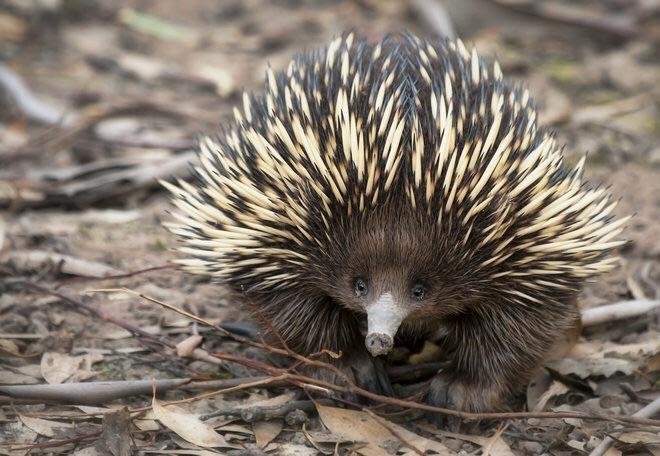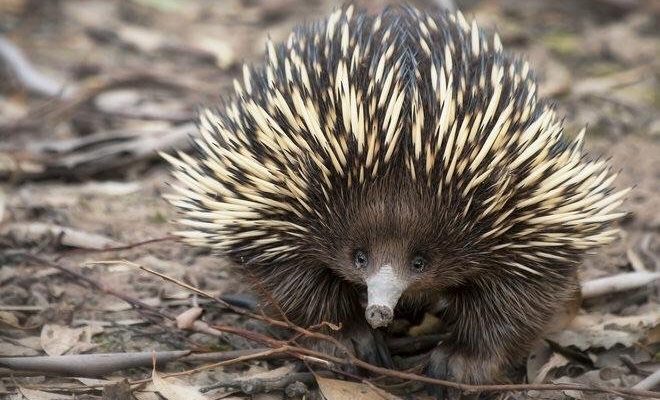
Echidnas are fascinating creatures, often called “spiny anteaters.” They belong to a small group of mammals that lay eggs. Picture a cross between a porcupine and an anteater, and you’ve got a rough idea of what an echidna looks like. Though they’re generally known for being shy and solitary, understanding their behavior and how they interact with humans can help us answer this question.
Understanding the Echidna’s Nature
Echidnas are primarily herbivores, mostly munching on ants and termites, but they’re also renowned for their quirky behaviors. They have a slow-paced lifestyle, often seen waddling around in search of food. Imagine a little spiky creature, taking its sweet time, foraging through the underbrush. This laid-back nature can often lead people to think they’re completely harmless.
However, like any wild animal, echidnas have their defenses. When threatened, they curl into a ball, exposing their spikes, making it difficult for predators to get a good grip. This instinct can sometimes lead to misunderstandings with humans. An echidna might not want to engage, but if it feels cornered, it will use its natural defense mechanisms.
Aggressiveness and Territorial Behavior
Echidnas are generally non-aggressive. They’d rather scuttle away or hide than confront a human. But there are times when they feel threatened. If you approach one too closely, especially during breeding season, they may act defensively. In these situations, it’s best to admire them from a distance.
Imagine you’re hiking in Australia and come across an echidna. Instead of rushing over to pet it, take a moment to step back and observe. Most of the time, they’ll simply ignore you. Protecting yourself and the echidna is vital for ensuring a peaceful interaction.
Potential Risks and Injuries
Even though they aren’t out to get us, there are still a few ways echidnas can pose risks to humans. One major consideration is their sharp spines. If a person gets too close and the echidna feels frightened, it might use its spikes as a defense. While it’s unlikely to cause serious harm, a prick from an echidna can be uncomfortable.
It’s also worth mentioning that echidnas have claws that are strong enough to dig into the ground. They use their claws for digging and finding food, but in a defensive situation, those claws can cause scratches.
So, while the presence of an echidna is usually no cause for alarm, knowing how to approach them respectfully is key to avoiding any unpleasantness.
Understanding Diseases and Parasites
Another aspect to keep in mind is the potential for diseases. Just like with other wild animals, echidnas can carry parasites or diseases that may affect humans. For example, they can host ticks, which could lead to Lyme disease in some cases. While this isn’t very common, it’s something to think about if you’re spending time in areas where echidnas roam.
To minimize risk, it’s best not to touch or handle wild echidnas. Respect their space, and you’ll significantly reduce any health risks associated with coming into contact with them.
Encountering Echidnas in the Wild
If you find yourself in an area where echidnas live, you might wonder how to enjoy the encounter safely. First, be aware of your surroundings. Echidnas are mostly found in Australia and New Guinea, typically roaming through forests, grasslands, and even urban areas.
If you spot one, remember to keep your distance. Use binoculars or a camera with a zoom lens to take in the sights without infringing on their personal space. Not only does this keep you safe, but it also helps the echidna feel secure in its environment.
When to Seek Help
In some cases, you might come across an injured or distressed echidna. If you encounter one that seems unable to move or is in danger, it’s essential to contact local wildlife authorities or a rehabilitation center. They have the training to handle these situations effectively and ensure the echidna gets the care it needs.
Remember, while it’s tempting to try and help these animals yourself, it’s best to leave it to the experts who understand their needs better.
So, can the echidna be dangerous to humans? The short answer is: not really. They’re fascinating creatures that tend to keep to themselves, and most encounters can be quite safe if approached with caution. By respecting their space and understanding their behavior, you can enjoy observing these unique animals without worry.
Next time you take a stroll in the bush or visit a wildlife park, keep an eye out for these marvelous spiny anteaters. Remember, they’re just as curious about you as you are about them—if you give them a moment to feel secure. In a world where we’re often too rushed, taking the time to appreciate wildlife, even the spiky ones, can be a delightful experience.

